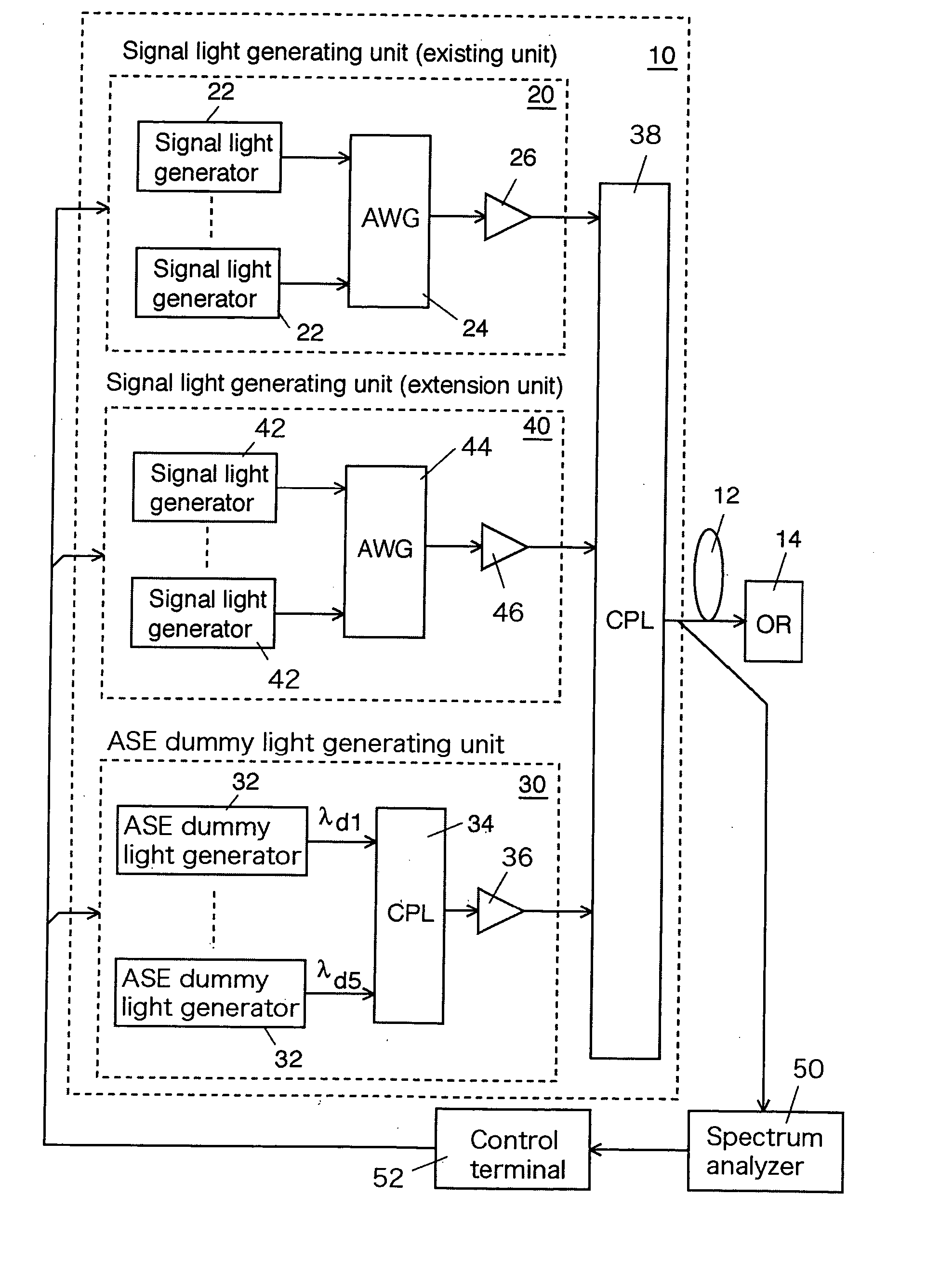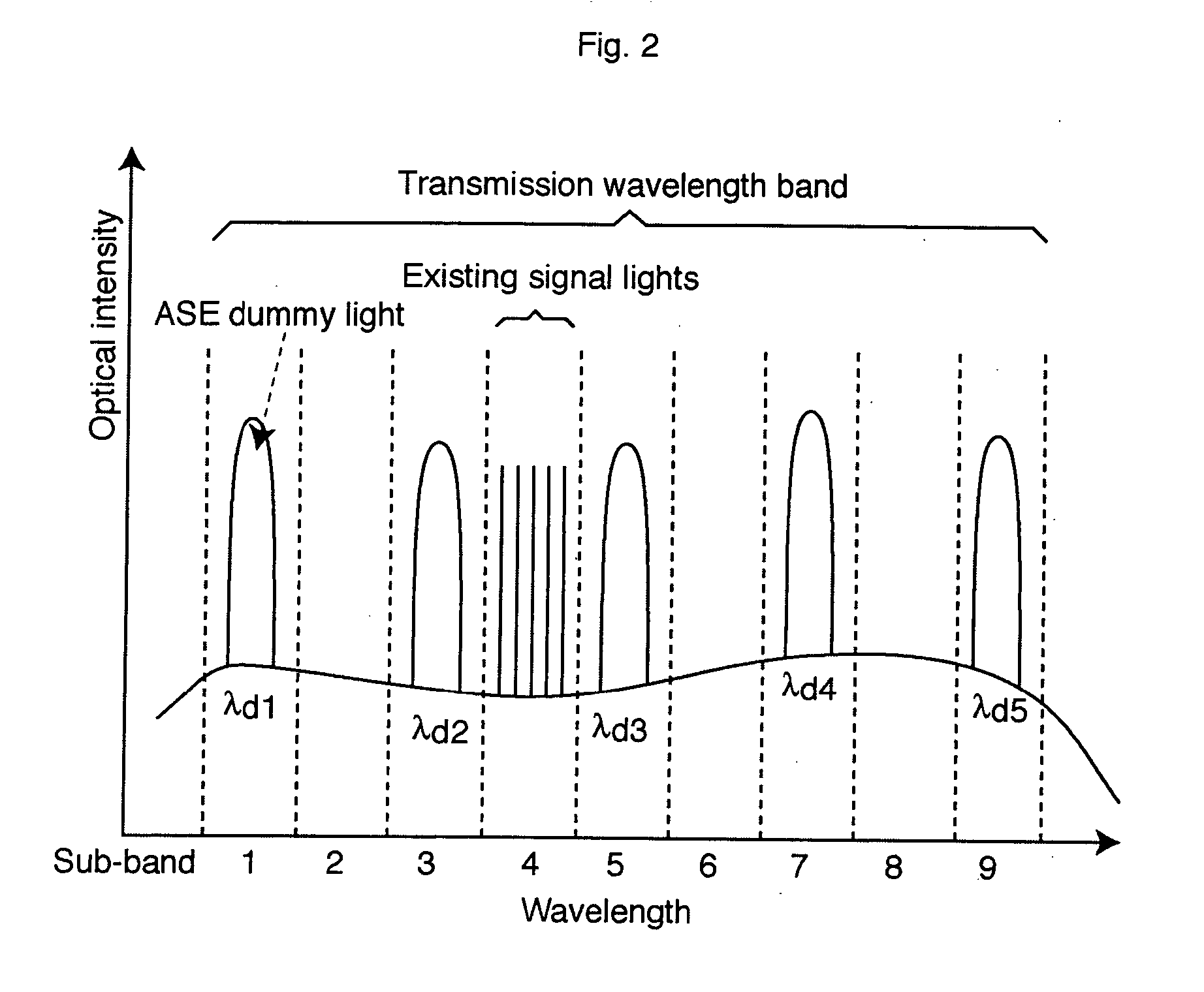Method for upgrading an optical transmission system and an optical transmitter
a technology of optical transmission system and optical transmitter, which is applied in the direction of transmission monitoring, multiplex communication, wavelength-division multiplex system, etc., can solve the problems of deterioration of signal lights of respective signal wavelengths, inability to achieve desired transmission characteristics, and practicably impossible to reproduce the gain profile in full implementation, so as to achieve satisfactory transmission characteristics, reduce nonlinear penalties of signal wavelengths, and facilitate actual operation
- Summary
- Abstract
- Description
- Claims
- Application Information
AI Technical Summary
Benefits of technology
Problems solved by technology
Method used
Image
Examples
Embodiment Construction
[0023] Exemplary embodiments of the invention are explained below in detail with reference to the drawings. In one embodiment, a transmission wavelength band in an optical transmission line at a full-implementing state, i.e. a transmission wavelength band in the design specification, is divided into a plurality of sub-bands having a specific wavelength width and signal lights or ASE dummy light are disposed per sub-band.
[0024]FIG. 1 shows a schematic block diagram of a WDM transmission system upgraded by an exemplary embodiment according to the invention, FIG. 2 shows an example of a wavelength map before the upgrading, FIG. 3 shows an example of a wavelength map during the upgrading, and FIG. 4 shows an example of a wavelength map after the upgrading. In FIGS. 2, 3, and 4, the horizontal axis expresses sub-bands and the vertical axis expresses optical intensity.
[0025] An optical transmitter 10 outputs a plurality of signal lights and a plurality of ASE dummy lights, each having a...
PUM
 Login to View More
Login to View More Abstract
Description
Claims
Application Information
 Login to View More
Login to View More - R&D
- Intellectual Property
- Life Sciences
- Materials
- Tech Scout
- Unparalleled Data Quality
- Higher Quality Content
- 60% Fewer Hallucinations
Browse by: Latest US Patents, China's latest patents, Technical Efficacy Thesaurus, Application Domain, Technology Topic, Popular Technical Reports.
© 2025 PatSnap. All rights reserved.Legal|Privacy policy|Modern Slavery Act Transparency Statement|Sitemap|About US| Contact US: help@patsnap.com



